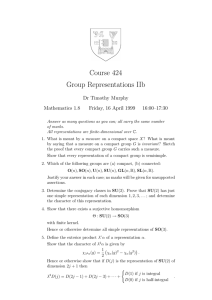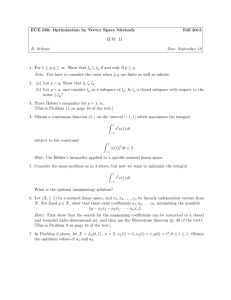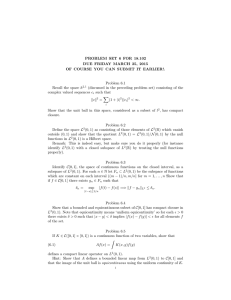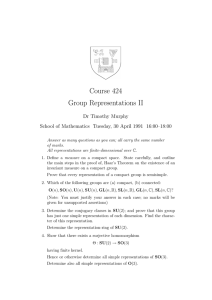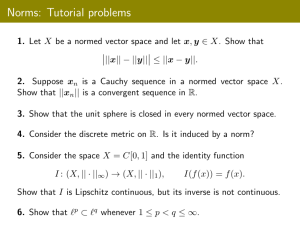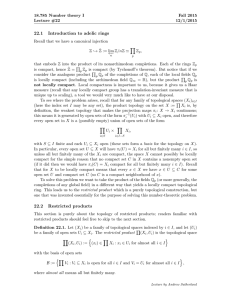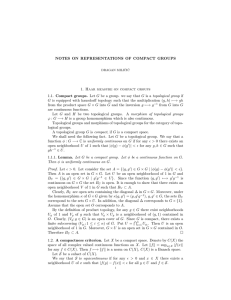Math 421/510, Spring 2008 Homework Sets 2 and 3 Instructions
advertisement
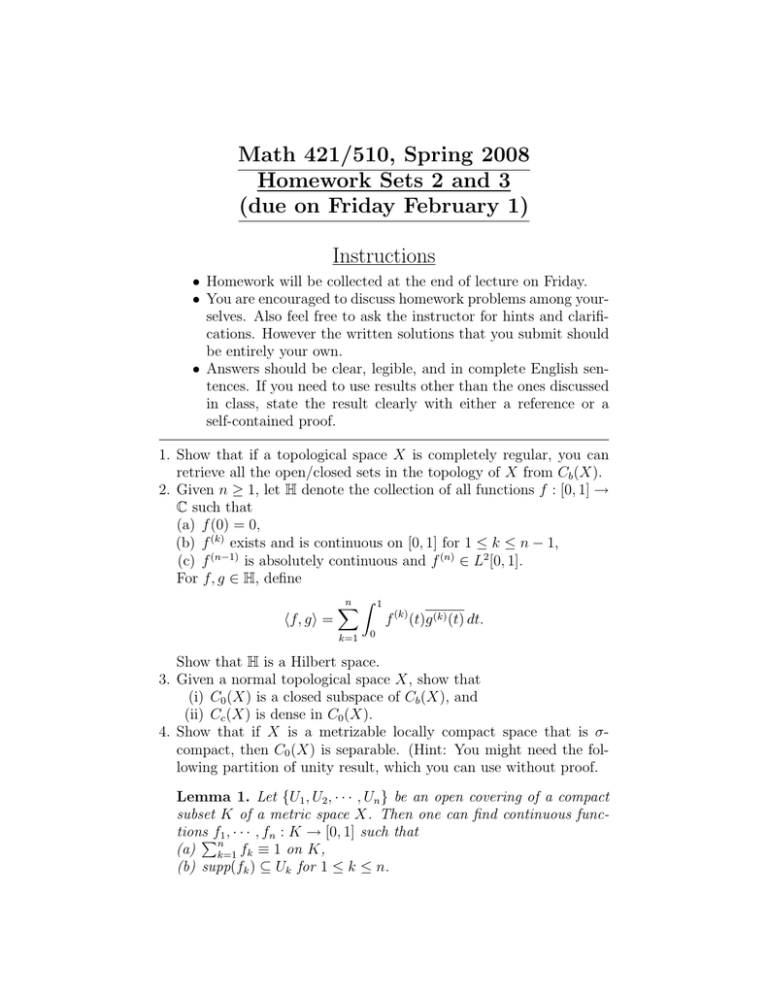
Math 421/510, Spring 2008
Homework Sets 2 and 3
(due on Friday February 1)
Instructions
• Homework will be collected at the end of lecture on Friday.
• You are encouraged to discuss homework problems among yourselves. Also feel free to ask the instructor for hints and clarifications. However the written solutions that you submit should
be entirely your own.
• Answers should be clear, legible, and in complete English sentences. If you need to use results other than the ones discussed
in class, state the result clearly with either a reference or a
self-contained proof.
1. Show that if a topological space X is completely regular, you can
retrieve all the open/closed sets in the topology of X from Cb (X).
2. Given n ≥ 1, let H denote the collection of all functions f : [0, 1] →
C such that
(a) f (0) = 0,
(b) f (k) exists and is continuous on [0, 1] for 1 ≤ k ≤ n − 1,
(c) f (n−1) is absolutely continuous and f (n) ∈ L2 [0, 1].
For f, g ∈ H, define
n Z 1
X
f (k) (t)g (k) (t) dt.
hf, gi =
k=1
0
Show that H is a Hilbert space.
3. Given a normal topological space X, show that
(i) C0 (X) is a closed subspace of Cb (X), and
(ii) Cc (X) is dense in C0 (X).
4. Show that if X is a metrizable locally compact space that is σcompact, then C0 (X) is separable. (Hint: You might need the following partition of unity result, which you can use without proof.
Lemma 1. Let {U1 , U2 , · · · , Un } be an open covering of a compact
subset K of a metric space X. Then one can find continuous functionsPf1 , · · · , fn : K → [0, 1] such that
(a) nk=1 fk ≡ 1 on K,
(b) supp(fk ) ⊆ Uk for 1 ≤ k ≤ n.
2
For a proof of a more general version of this result in the setting of
a normal topological space, see section 6.5 in Chapter 5 of Conway.
A topological space X is normal if given any disjoint closed sets E
and F , there are open neighbourhoods U of E and V of F that are
also disjoint. Check that a metric space is normal, so that the result
applies.)
5. You know that the closed unit ball in a finite-dimensional normed
space is compact (why?). It turns out that this property characterizes finite-dimensional normed spaces. This goal of this exercise is
to provide a proof of this fact.
(i) Prove the following result due to Riesz. Let Y be a proper
closed subspace of a normed vector space X. Show that for any
> 0, there exists a unit vector x ∈ X such that d(x, Y ) > 1−.
Another way of restating the result is the following: if Y is a
subspace of X such that sup{d(x, Y ) : ||x|| = 1} < 1, then Y
is dense in X.
(ii) Use part (i) to show that the closed unit ball of an infinitedimensional normed space X is never compact.
(iii) If X is a locally compact normed vector space, show that X
has to be finite-dimensional. (Definition: A topological space
X is locally compact if every point has a compact neighborhood,
i.e., every point p ∈ X is contained in a compact set K which
contains an open set U with p ∈ U . )

